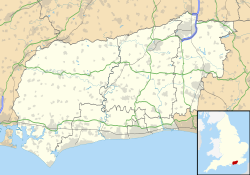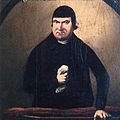| Yapton Free Church | |
|---|---|
| Yapton Evangelical Free Church | |
 The church (left) and attached schoolroom (right) from the northwest | |
| 50°49′15″N0°36′56″W / 50.820912°N 0.615601°W | |
| Location | Main Road, Yapton, West Sussex BN18 0EA |
| Country | England |
| Denomination | Evangelical |
| Previous denomination | Congregational |
| Website | yaptonfreechurch |
| History | |
| Status | Church |
| Founded | 1861 (in present building) |
| Founder(s) | Henry Bateman |
| Architecture | |
| Functional status | Active |
| Heritage designation | Grade II |
| Designated | 20 September 1984 |
| Years built | 1861 |
| Clergy | |
| Pastor(s) | Hugo van Driel [1] |
Yapton Free Church [1] (also known as Yapton Evangelical Free Church) [2] is an Evangelical church in the village of Yapton in West Sussex, England. The "pretty flint building" dates from 1861, when it was built for a group of Congregational worshippers who had been active in the area for several years. Growth in membership during the 20th century meant that by the 1990s some services and activities were held in larger premises elsewhere, but the chapel remains registered as a place of worship. The church is denominationally independent but is associated with a worldwide cross-denomination network of churches called Partners in Harvest. The church building has been listed at Grade II by Historic England for its architectural and historical importance.



